Name Shahaji Bhosle | Died January 23, 1664 | |
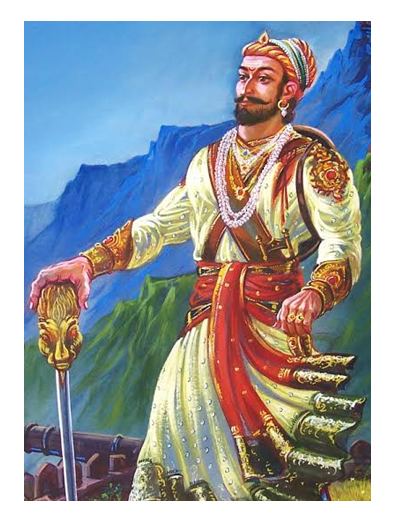 | ||
Spouse JijabaiTukabaiNarsabai Issue SambhajiShivajiEkojiKoyajiSantaji Father Malojiraje Babaji Bhonsle Grandchildren Sambhaji Bhosale, Rajaram Chhatrapati, Shahuji I Great grandchildren Chhatrapati Shahu, Shivaji II, Pratap Singh of Thanjavur, Shahuji II Similar People Shivaji, Jijabai, Sambhaji Bhosale, Rajaram Chhatrapati, Sai Bhosale | ||
Shahaji Bhosle, also respectfully known as ""Shahji Raje Bhosle"" (March 18, 1594/1602 - January 23, 1664) was a Maratha general from the 17th century. The eldest son of Maloji Bhosle of Verul, Shahaji inherited the Pune and Supe jagirs, under the Ahmadnagar Sultanate. During the Mughal invasion of Deccan, he joined the Mughal forces and served Emperor Shah Jahan for a brief period. After being deprived of his jagirs, he defected to the Bijapur Sultanate in 1632 and regained control over Pune and Supe. In 1638, he also received the jagir of Bangalore, after Bijapur's invasion of Kempe Gowda III's territories. He eventually became the chief general of Bijapur and oversaw its expansion.
Contents
- Veer shahaji shivaji maharaj stories in marathi shivaji raje marathi goshti hd
- shahaji Raje Bhosale History
- Early life
- Battle Of Bhatvadi
- Alliance With Deccan Sultanates The Mughals
- Jagirdar of Bangalore
- Legacy
- References
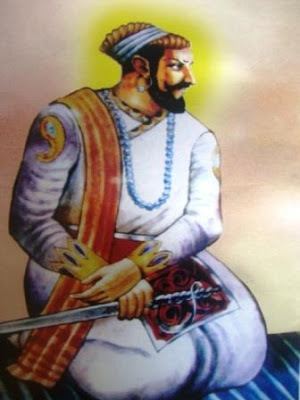
An early exponent of guerrilla warfare, he brought the House of Bhonsle into prominence. He was father of Shivaji, the founder of Maratha Empire. The princely states of Tanjore, Kolhapur and Satara are also Bhonsle legacies.
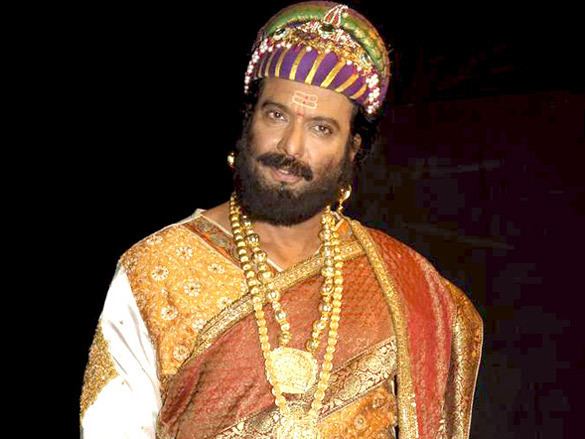
Veer shahaji shivaji maharaj stories in marathi shivaji raje marathi goshti hd
शहाजी राजे भोसले इतिहास| shahaji Raje Bhosale History
Early life

Shahaji was the son of Maratha warrior Maloji Bhosale.Maloji was a capable soldier and eventually became Sar Giroh and was awarded independent Jagir(Fief) of Pune & Supe districts in the court of Nizam Shah of Ahmednagar. Maloji was childless for a long time. After seeking blessings from a Sufi Muslim pir called Shah Sharif, two sons were born to him. Maloji named his sons Shahaji and Sharifji in honour of the pir. Shahaji married Jijabai,the daughter of Lakhuji Jadhav,another Maratha general in the service of Nizam Shah of Ahmednagar when both of them were children.
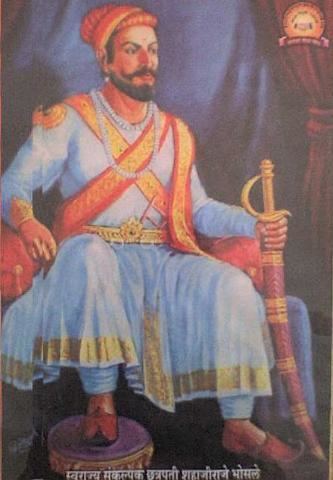
The Bhosale clan ,despite being from Maharashtra region claimed to be Rajput.Shahaji, in his letter to Adil Shah, called himself a Sisodia Rajput.
Battle Of Bhatvadi
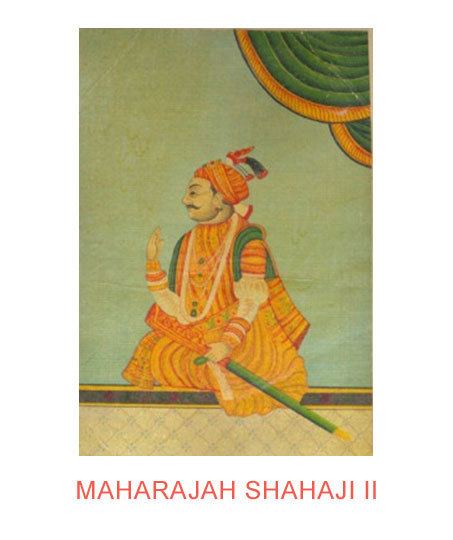
The battle of Bhataudi was fought in 1624 near Ahmednagar, Maharashtra between forces of Shahaji, Nizam and the combined forces of Mughals and Adilshahi Sultanates. Mughal Emperor Jahangir's son, Prince Khurram(later on Emperor Shah Jahan left his father in hostility and took asylum with Shahaji Raje Bhonsle of Nizamshahi. To defeat Shahaji and rescue Khurram, Jahangir had ordered his commander-in-chief Lashkar Khan to finish off Nizamshahi. Accordingly, Lashkar Khan with an army of 120,000(1.2 lakhs) marched on Ahmednagar. The Adilshahi Sultanate had also agreed to help the Mughals. Adilshahi army amounted to no less than 80,000 men. Thus, a massive army of 200,000(2 lakhs) walked on Ahmednagar. On the other hand, Shahaji had an army of 20,000 at his disposal. Shahaji had assigned 10,000 of these, the task of protecting and defending the Ahmednagar fort and town. The remaining 10,000 were with Shahaji.
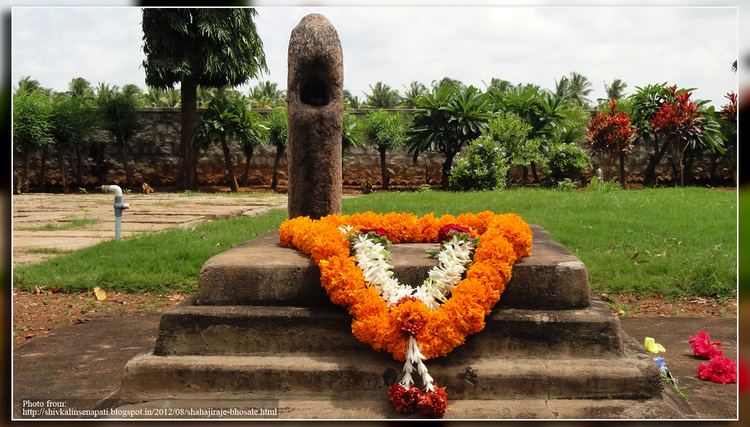
Such a huge army required huge amount of food and water. Thus, both Mughal and Adil forces were encamped on the bank of the Mehkari River. It flowed North-South. The river had a dam to conserve water as Ahmednagar experienced water shortage. However, during this period, there had been good amount of rainfall. The river had abundant water and was filled to the brim. Shahaji came up with a brilliant idea. With utmost care, cracks were developed in the dam. It was night time; the whole Mughal and Adil encampments were fast asleep. Suddenly, water started gushing out of the dam from each of the cracks. Mughals and Adils were clueless about what was happening. It was as if a huge wall of irate water was running over the Mughals and Adils. Everyone started running helter-skelter to save their lives. There was chaos and confusion. The whole encampment was flooded with water. Clothes, rations, arms, ammunitions, cannons and cattle everything drowned. Dead elephants were seen floating in the water. Many were taken as prisoners. As many as 25 renowned Mughal and Adil chiefs were imprisoned by Shahaji. It was a huge win for Shahaji, after which Shahaji became very well-known throughout India.
Alliance With Deccan Sultanates & The Mughals
At various points of time, Shahaji allied himself with the Adilshah of Bijapur, the Nizamshah of Ahmednagar and the Mughals. His ultimate ambition was to set up an independent Maratha kingdom. He tried on two occasions, first one after the brutal murder of his father-in-law Lakhuji Rao Jadhav(father of Jijabai) and second in 1636. The second attempt was a formidable challenge.
In the meantime, Jahan Khan, the wazir of Nizam killed Nizam on the reasoning that the Nizam was an incapable and unwise ruler, who couldn’t take appropriate decisions and was easily deceived by some people. Jahan Khan greeted Shahaji with open hands and asked Shahaji to join him. Shahaji started leading Nizam’s forces. However, at that time, the Mughal forces on the order of Shah Jahan had slain all the men in relation to Nizam and also killed two pregnant women. This was done to finish off the Nizamshahi, as there wouldn’t be any Male heir to the throne of the Nizam. However, Shahaji, in order to establish swarajy he decided to crown a child named Murtuza, who was in relation with Nizam as the next Nizam. Shahaji assured Murtuza’s mother that he would not be harmed and vouched for his safety.shahaji crowned murtuza on shahagad(pemgiri fort) at pemgiri (Sangamner) in Ahmednagar district
Shahajahan dispatched a force of 48,000 to reduce Shahaji, Nizam and his ally Adilshah. Under such mounting attack Adilshah sued for peace. With the withdrawal of Adilshah's support, Shahaji could not hold much against the Mughals. His possessions were reduced quickly. In the fort of Mahuli he was besieged. Portuguese did not offer any help from naval side due to fear of the Mughals. In this war, Shahaji fought till the last. But, unfortunately Murtaza, the infant Nizam, was kidnapped by Mughals and for the purpose of saving the life of Nizam, it became necessary for Shahaji to make compromise. This compromise finished Nizamshahi. Shahaji, on the condition of protecting the life of little Mourtaza Nizam at any condition, handed him over to Shahajahan. Nizam was taken away by Sardar Ranoji Wable (regional sardar of Shah Jahan)to Delhi. He was inducted into Adilshahi. As a precaution Shahajahan, ensured that Shahaji was posted in deep south so as not to pose any challenge to Mughals. He finally became one of the top generals in the Adilshah's army, accepting a Jagir in his court, being based in Bengaluru (present-day Bangalore in Karnataka). This is one phase of Shahaji's life.
In 1638, a large Bijapur army led by Ranadulla Khan and accompanied by Shahaji defeated Kempe Gowda III and Bangalore was given to Shahaji as a jagir. Shahaji successfully led the Bijapur army to many victories against the Rajas of southern India. Instead of punishing or executing them, Shahaji reprieved all the Rajas. The Rajas thus developed healthy relations with Shahaji and offered military support to Shahaji whenever required.
Jagirdar of Bangalore
In Bangalore, the second phase of Shahaji's life started. He sent his wife Jijabai and their younger son, Shivaji to Pune to manage his jagir of Pune. The couple's elder son, Shambuji(also called as Sambhaji) and another son Venkoji from his second wife stayed with him at Bangalore.Shahji was virtually the king of the territory under his control.the Sultan trusted him and called him the a son and pillar of the state.In Bangalore, Shahaji patronizedmen of learning
Meanwhile young Shivaji started capturing territory controlled by Adilshah around Pune. AdilShah, alarmed by the activities of Shivaji in particular, deceitfully captured Shahaji and imprisoned him as he suspected that Shahaji encouraged Shivaji. Two expeditions were sent simultaneously against Shivaji and his elder brother Sambhaji, who defeated Adilshahi forces. Shivaji meanwhile approached the Mughal Emperor, Shahjahan, seeking help against Adilshah. Fearing another Mughal campaign against Bijapur, Adilshah released Shahaji from prison. However, the elder son Sambhaji was killed during an expedition due to the treacherous role of Afzal Khan. Later Shivaji killed Afzal Khan.
Thus these events proved that Shahaji had taken a sensible decision in keeping Shivaji in the original stronghold of Pune barring which, like Shahaji, Shivaji would have been imprisoned or killed like his elder brother. This period of crisis was overcome by sacrifice and personal bonds of the family. Shahaji actively supported Shivaji in his earlier enterprises, like the campaign against Afzal Khan. Sensing treachery by Afzal khan, Shahaji was waiting near Bijapur with his army of 17,000. He had warned Badi Begum of Adilshah that, if Afzal Khan and his Adilshahi forces killed Shivaji by deceit, then there wouldn't remain even a brick of the Adilshahi kingdom.
Shahaji died around 1665, after falling off his horse during a hunt.
Legacy
Shahaji had two sons by Jijabai, Sambhaji and Shivaji. Sambhaji was killed by Afzal Khan. He was cremated in town of Channagiri Taluka of Davanagere district of Karnataka. Shahaji had one son Venkoji(Ekoji I) by his second wife, who came from the Mohite family. Venkoji later ruled over the independent Maratha kingdom of Thanjavur. Shahaji groomed all his sons as good administrators and men of culture and taste, Shivaji in the Pune region, Sambhaji in Banglore and Venkoji in Thanjavur region. Shivaji encouraged farming and cultivation, similarly Venkoji also dug canals in Thanjavur and promoted farming activities. Both were good administrators. Like Shahaji, they were scholars and warriors. Shahaji had causeed a champukavya. At Bangalore, literary activities were promoted by him. His court poet Jayram Pindye composed Radha Madhav Vilas Champu in flowery Sanskrit. His literary traditions were carried on by his sons and had strong influence on the mind of Shivaji and the Thanjavur branch.
Shahaji samadhi/tomb is at Hodigere near Channagiri(Davangere Taluka) in Karanataka.
Shahaji's dream of an independent kingdom was made a reality by his both sons, the great Shivaji Maharaj in Deccan and Ekoji I in Thanjavur
